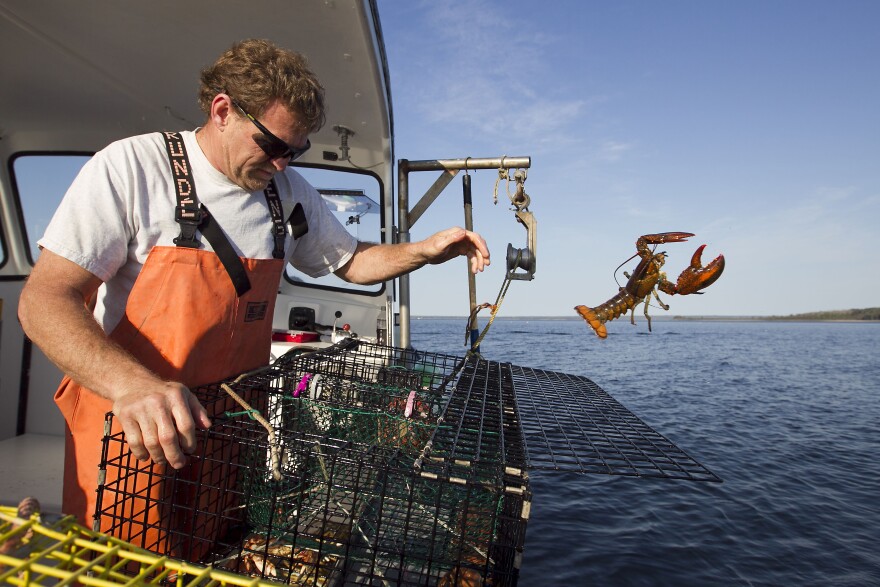Lobstermen could soon face a new regulation that state officials say would be designed to protect future lobster populations. That comes as the industry is under pressure to comply with a slate of other recent rules that aim to protect endangered North Atlantic right whales.
Maine's lobster landings saw an unprecedented boom during the 2010s, but that's dropped off some in recent years. And Patrick Keliher, Commissioner of the state's Department of Marine Resources, says recent research shows that the number of juvenile lobster floating in the water column or settling to the bottom is declining for a third year in a row.
"We're starting to pick it up in ventless trap surveys," Keliher says. "We're picking it up in settlement. These are tough conversations, they are very tough to have at a time when we're dealing with the whale issue."
To protect right whales from entanglement in trap rope, federal regulators recently imposed a four-month closure of a thousand-square miles of prime fishing grounds off Maine to traditional lobster fishing, and they are requiring some potentially costly gear changes as well.
Now Keliher says that lobstermen should also consider another new rule — to create a "trigger" mechanism for reducing the catch of juvenile lobster when their abundance falls below a certain level.
He emphasized that the industry in Maine has a long and scientifically-validated history of effective management of the lobster resource, throwing back juveniles under a certain size, as well as fertile females, and the larger lobster which can be the most prolific egg-bearers.
Maine lobstermen currently throw back juveniles whose mid-sections measure less than 3.25 inches. A new trigger could raise that minimum, for instance, by an eight of an inch, ensuring more lobster make it to reproductive maturity.
"Small changes, particularly on the minimum end, means more product on the bottom," Keliher says. "That means more spawning-stock biomass in the long term. That means we're protecting those landings six and seven years out when they become legal (size)."
Patrice McCarron, executive director of the Maine Lobstermen's Association, on Tuesday told members of the Atlantic States Marine Fisheries Commission that fishermen will be "in shock" when they learn about the potential new rule.
And she cautioned that before major new actions are taken, regulators should consider whether the rules that were just enacted might have a positive effect on the abundance of juvenile lobster.
Keliher and other members of the Commission voted to offer up for public comment a slate of options for a trigger mechanism and changes in allowable catch sizes in lobster zones from Maine to Massachusetts.
Keliher says he is working to create a robust process for engaging Maine's lobstering community in the discussion. It's a particularly difficult challenge right now, he says, when the COVID-19 pandemic is inhibiting in-person exchanges.


